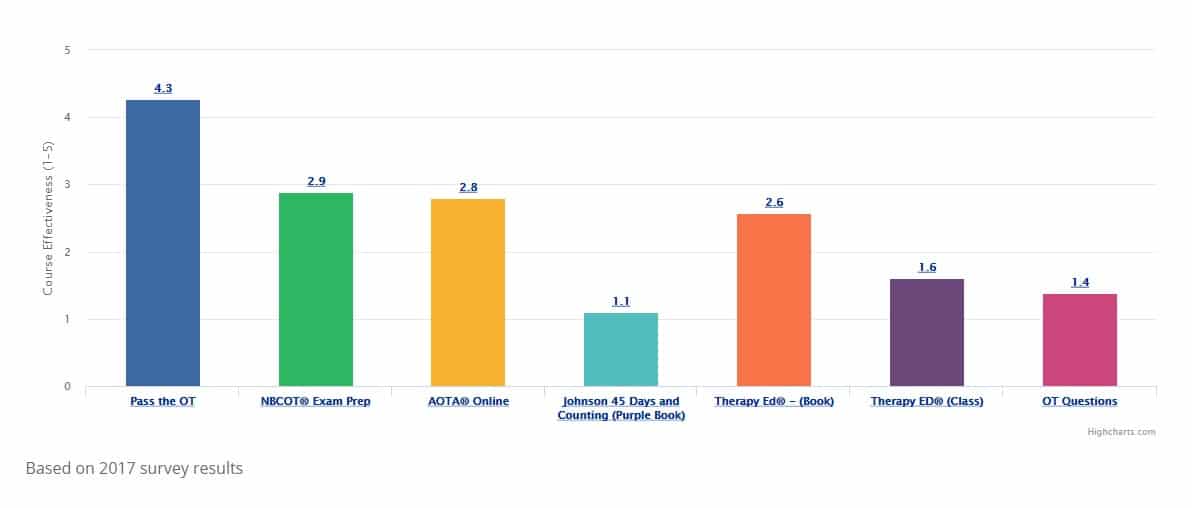Roles of a Registered Occupational Therapist, Certified Occupational Therapy Assistant & Aide
. …………………. 
The occupational therapy service delivery process involves evaluation, intervention planning, intervention implementation, intervention review, and outcome evaluation. Regardless of the setting in which occupational therapy services are delivered, the OT and the OTA assume the following generic responsibilities during evaluation, intervention, and outcomes evaluation.
Occupational Therapists are:
•Autonomous practitioners
•Responsible for all aspects of OT service delivery
•Accountable for the safety & effectiveness of OT services
Occupational Therapy Assistants are:
•Able to deliver OT services under the supervision & in partnership with an OT
Specific Roles of an Occupational Therapist (OTR®)
- Interprets the referral
- Responsible for all aspects of the initial contact with the patient
- Accountable for the safety and effectiveness of the occupational therapy treatment and service delivery process (i.e., evaluation and intervention).
- Defines areas of disability to be evaluated, determines the need for service, defines the problems that need to be addressed, determines the client’s goals and priorities, establishes interventions, determines assessment tasks that can be implemented to the OTA, and interprets the data obtained from the evaluation.
- Example: After observing a student in the classroom, an occupational therapist decides to evaluate the student using the VMI assessment. The occupational therapist comes up with the goal of improving sizing and spacing in the student’s handwriting by 25% in 6 weeks. The occupational therapist implements an intervention of using a pencil grip and sensory strategies such as tracing letters in various tactile materials.
- Overall responsibility for the development and delegation of the intervention.
- Example: The OT will track the progress and read the OTA notes to ensure appropriate treatment has been implemented.
- Determines need for service
- Example: makes recommendations to the IEP team
- Determines priorities of goals
- Example: develops treatment goals based off of the IEP
- Establishes goals for intervention.
- Example: The OT develops treatment plan or which adaptive equipment will be used for the patient.
- Determines the need for continuing, modifying, or discontinuing OT services.
- Example: If a modification to treatment needs to be made, the OT makes the adjustment.
- Responsible for supervising the OTA®, OT aide and OT fieldwork students
- Provides guidance, education, support, respect, and encouragement
- Assures appropriate utilization of training and potential
- Encourages creativity and innovation
- Fosters growth and development
- Responsible for all aspects of OT service delivery process
- Accountable for the safety and effectiveness of OT service delivery process
- Determines when to delegate
- Clearly communicate roles, responsibilities, and expectations to OTA
- Directly involved in the discharge.
- Example: The OT determines the need of discharge and writes the appropriate documentation.
Specific Roles of a Certified Occupational Therapy Assistant (COTA®)
- Contributes to the evaluation by helping to gather data, administering parts of the evaluation, and reporting observations.
- Delivers OT services under the supervision of the OT.
- Example: Carries out the OT’s intervention plan based on the evaluation results
- Documents treatment and specific interventions, techniques, assessments and intervention methods used as well as communications during the intervention.
- Example: The OTA documents appropriately based on the SOAP note format
- Can collaborate with the OT to come up with an intervention plan
- Example: The OTA can give input and recommendations for the client’s intervention.
- Selects, implements, and makes modifications of the therapeutic activities and interventions that are consistent with the client’s physical and cognitive level, goals, and requirements of the practice setting.
- Example: If working on muscle strengthening the OTA can decide to use therapeutic bands and dumbbells.
- Can supervise the aide, Level I fieldwork students, and OTA Level II fieldwork students
- Delivers OT services under the supervision of an OT®
- Demonstrates service competency
- Communicates supervision needs to the OT®
Quick guide to the different roles of the OT and OTA
OT |
OTA |
|
| GENERAL | The OT is responsible for all aspects of occupational therapy service delivery and is accountable for the safety and effectiveness of the occupational therapy service delivery process. | The OTA delivers occupational therapy services under the supervision of and in partnership with the occupational therapist. |
| The OT must be directly involved in the delivery of services including during the initial evaluation and regularly throughout the course of intervention and outcome evaluation. | ||
| It is the responsibility of the OT to determine when to delegate responsibilities to OTA.
|
It is the responsibility of the OTA who performs the delegated responsibilities to demonstrate competency. | |
| The OT accepts and responds to referrals in compliance with state laws or other regulatory requirements. | ||
| EVALUATION | The OT initiates and directs the screening, evaluation, and re-evaluation process and analyzes and interprets the data in accordance with law, regulatory requirements, and AOTA documents.
|
|
| The OT is responsible for directing all aspects of the initial contact during the occupational therapy evaluation, including:
a. determining the need for service b. defining the problems within the domain of occupational therapy that need to be addressed c. determining the client’s goals and priorities d. establishing intervention priorities e. determining specific further assessment needs f. determining specific assessment tasks that can be delegated to the occupational therapy assistant
|
||
| The OT directs the evaluation process. | ||
| The OT initiates and directs the evaluation, interprets the data, and develops the intervention plan. | A screening is the process by which a person’s OT needs are assessed. Whether or not an OTA can complete a screening depends on the information required from the screening. An OTA can state or write observations but cannot make an evaluation or determine a need for occupational therapy services. This must be determined by an OT.
The OTA may, if directed by the occupational therapist, and deemed competent, perform designated assessments to contribute to the evaluation, but may not interpret data. The interpretation of assessment results and the overall evaluation is the responsibility of the occupational therapist |
|
| The OT interprets the information provided by the OTA and integrates that information into the evaluation and decision-making process. | ||
| INTERVENTION PLANNING | The OT has overall responsibility for the development of the occupational therapy intervention plan. | |
| The OT and the OTA collaborate with the client to develop the plan. | The OT and the OTA collaborate with the client to develop the plan. | |
| The OTA is responsible for being knowledgeable about evaluation results and for providing input into the intervention plan, based on client needs and priorities. | ||
| INTERVENTION IMPLEMENTATION | The OT has overall responsibility for implementing the intervention. | |
| When delegating aspects of the occupational therapy intervention to the OTA, the OT is responsible for providing appropriate supervision. | The OTA is responsible for being knowledgeable about the client’s occupational therapy goals. | |
| The OTA selects, implements, and makes modifications to therapeutic activities and interventions that are consistent with demonstrated competency levels, client goals, and the requirements of the practice setting. | ||
| INTERVENTION REVIEW | The OT is responsible for determining the need for continuing, modifying, or discontinuing occupational therapy services. | The OTA contributes to this process by exchanging information with and providing documentation to the OT about the client’s responses to and communications during intervention. |
| OUTCOME EVALUATION | The OT is responsible for selecting, measuring, and interpreting outcomes that are related to the client’s ability to engage in occupations. | The OTA is responsible for being knowledgeable about the client’s targeted occupational therapy outcomes and for providing information and documentation related to outcome achievement. |
| The OTA may implement outcome measurements and provide needed client discharge resources. |
The OTA’s role in the Evaluation Process
Evaluating the client is the primary responsibility of the OT, and that analyzing and interpreting all evaluation data must be carried out by the OT. However, if permitted by the relevant state practice act, the OTA may provide additional information on the client’s performance or administer some standardized assessments once service competency has been demonstrated. Service competency is defined as “the ability of the OTA to obtain the same or equivalent results as the supervising OT in evaluation and treatment”.
OTA students are given general exposure to a variety of standardized and non-standardized assessments in their academic preparation. However, it should not be assumed that an entry level OTA is competent in administering standardized assessments until he or she can successfully demonstrate the ability to follow protocols correctly and obtain consistently accurate information for the OT. Even when an experienced OTA is assigned to work with an unfamiliar OT, the process of establishing service competency in assessments must be completed again. This can be accomplished in several ways, including jointly reviewing the assessments that are used at the facility, having the OTA observe the OT during administration of the assessment, having the OTA practice administering the assessment to the OT, and videotaping a practice assessment for the OT/OTA team to review.
Practice acts may differ from state to state, and they supersede AOTA official documents, so occupational therapy practitioners should check their state practice act for what role the OTA may take in the evaluation process in their state. In addition, OTA involvement in the evaluation process is limited when using assessments such as the Sensory Integration Praxis Test or the Assessment of Motor and Process Skills, which require training to administer that is available only to OTs.
Aide
- Can be a teacher’s assistant, Para educator, or instructional assistant.
- Prepare materials and assemble equipment
- Example: If the OT will be working on handwriting, the aide can bring out the pencils.
- Provides supportive services to the OT and the OTA.
- Does not provide skilled occupational therapy services. Not licensed in the field of occupational therapy
- Example: Can perform clerical tasks such as answering the phone or order supplies
- Trained by the OT and OTA to perform specifically delegated tasks.
- Must first demonstrate competency to be able to perform the assigned task when the outcome is predictable, the situation of the client and environment are stable, and the task and process have been clearly established.
.
Supervision
Within the scope of occupational therapy practice, supervision is a process aimed at ensuring the safe and effective delivery of occupational therapy services and fostering professional competence and development
Supervision Parameters
o Conduct at least a weekly review of the therapy plan and intervention
- Encompasses all aspect of services
- Can be done on site or by telecommunication
o Conduct periodic onsite review (30 days)
o Be readily available at all times
o Provide direct care
o Follow the progress of each client
o Ensures that the COTA® does not function autonomously
Documentation of Supervision
o One of the following:
- Documentation of direct service by the OTR®
- Documentation of review of the records and/or treatment notes
- Co-signature of COTA®’s treatment notes
o Level of Supervision
- Determined by the supervising OTR®, level of experience of the COTA®.
- Consider multiple factors
- Determine competency
- Re-evaluate regularly
- OTR®’s ethical responsibility to ensure that the amount, degree, and pattern of supervision are consistent with the knowledge, skill, and ability demonstrated
- Close supervision: Daily, direct, on-site contact between the OT and the OTA. Required for entry level OTA’s with less than one year of experience.
- Routine supervision: Direct, at least every 2 weeks, on-site, plus indirect (phone, written, etc.) between the OT and the OTA. This level of supervision may be required by some third party payors, even when the OTA is experienced.
- General supervision. Direct, monthly contact between the OT and the OTA plus indirect contact as needed.
Competency
· Two people performing the same procedure will obtain the same results
· Must be a high degree of confidence that the OTA® will obtain the same information or results as the OTR®
· The acceptable standard percentage of agreement set by the OTR® met on 3 consecutive occasions.
Reassessment of needs
- Amount of supervision may change
- Type of student
- Age of student
- Type of treatment
- Setting
Delegation based on:
- Complexity of condition
- Knowledge, skill, competence of COTA®
o Strength and limitations
- Nature and complexity of the intervention
- Needs and requirements of the setting
o Don’t limit opportunities due to preconceived ideas about the COTA®’s capabilities
- Reassessment of needs
Methods:
- Meet weekly to review cases
- Joint therapy sessions
- Co-leading therapy groups
- Share treatment sessions
.
Role of OTA’s working in Occupational Therapy clinics vs. Recreational Therapy clinics
– OTA’s often find employment in Recreational Therapy Departments or Activities Departments. The training that OTA’s receive lends itself well to helping patients develop leisure skills.
-When a OTA is working in an Occupational Therapy clinic, he or she must be supervised by a properly credentialed OT per the supervision guidelines listed above.
-When a OTA is working in a Therapeutic Recreation department, he or she is no longer providing skilled occupational therapy services, but is instead providing therapeutic recreation services. Supervision by an OT is no longer required. Instead, supervision of the OTA would be the responsibility of the Therapeutic Recreation Specialist, according to the therapeutic recreation licensure guidelines in the state where the department is located and the National Council for Therapeutic Recreation Certification (NCTRC®).
References:
Model State Regulation for Supervision, Roles, and Responsibilities During the Delivery of Occupational Therapy Service. The American Occupational Therapy Association.
https://www.aota.org/~/media/Corporate/Files/Advocacy/State/Resources/Supervision/MSRSOTA.pdf
The Occupational Therapy Assistant’s Role in the Evaluation Process.
https://www.oregon.gov/otlb/Documents/OTA%27s%20role%20in%20the%20Evaluation%20Process%20by%20Mashelle%20Painter.pdf
Standards of Practice for Occupational Therapy – AJOT (http://ajot.aota.org) November/December 2005, Volume 59, Number 6.
https://philaotfwconsortium.squarespace.com/s/OT-OTA-Role-Delineation-CCD-2017.pdf
http://www.ncbot.org/otpages/faqs.html




